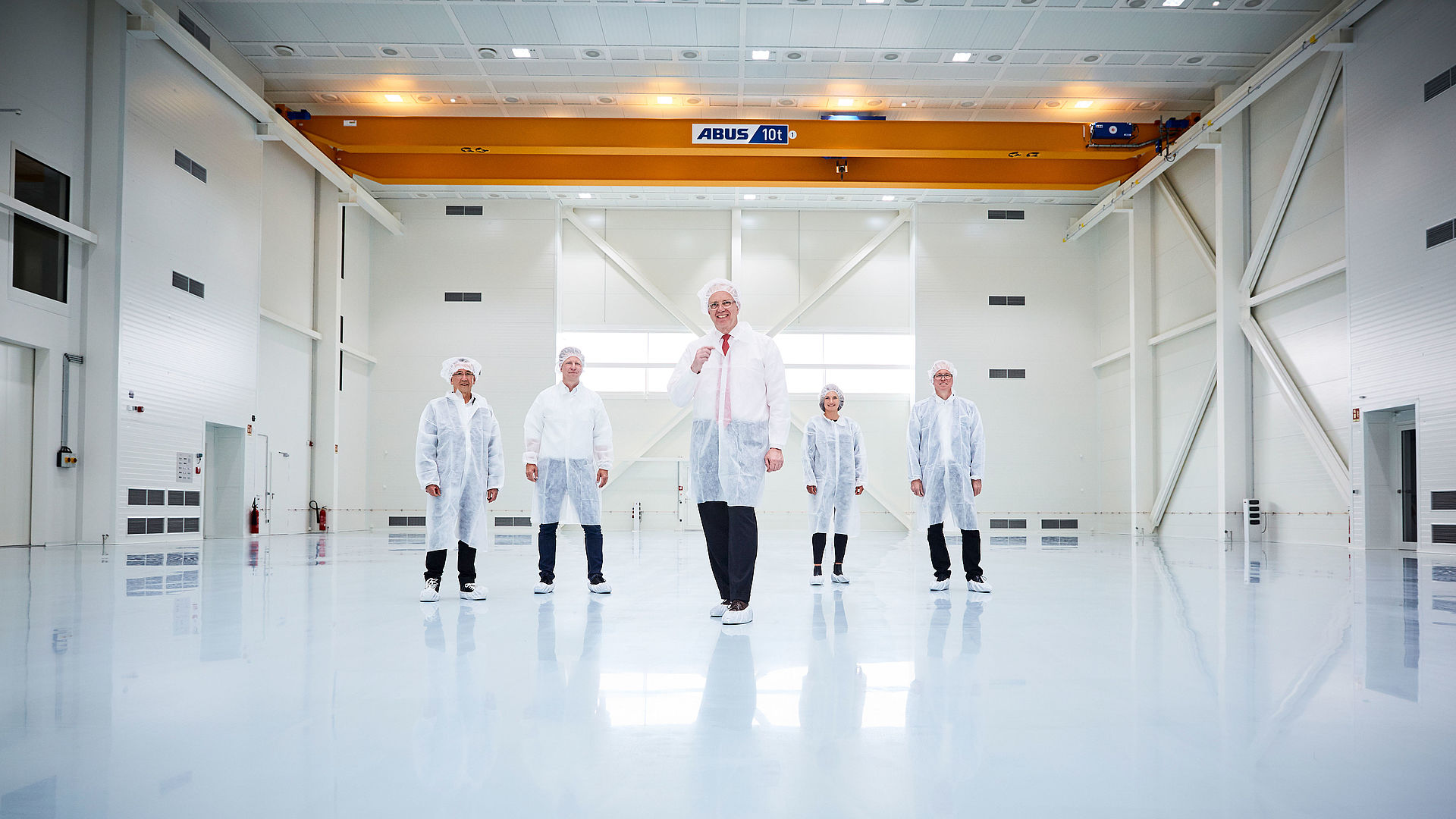If you want to see satellite hardware up close, you have to dress accordingly. That means you need a hair net, a smock and shoe covers. Satellites are not manufactured in ordinary production halls, but in cleanrooms. Why is that so? What kinds of things can be found in normal rooms that could damage the satellite hardware?
There are no completely dust-free rooms on Earth
Dust is ubiquitous on Earth. In fact, it is so omnipresent that there are no completely dust-free environments. In a normal room, an average of six milligrams of dust per square meter form every day.
Dust reduces the reliability of satellites
Once launched into space, satellites can no longer be serviced. Contaminations increase the probability of malfunctions occurring during the planned lifetime. Even a single dust particle can interrupt a circuit and the smallest foreign object adhering to a mirror or sensor can render entire instruments unusable.
For this reason, satellites are manufactured in cleanrooms and people and material can only get to the hardware through an airlock.
The special clothing that has to be worn in cleanrooms primarily serves as a filter between the surface of the human body and the cleanroom environment. To prevent the cleanroom clothing itself from becoming a source of particles, it is usually made of abrasion-resistant synthetic fibres such as polyester. However, since synthetic fabrics tend to become electrostatically charged, cleanroom garments must be provided with a special antistatic finish. This not only serves to spare the wearer of the clothing painful electric shocks, but also to protect the satellite hardware, which can be damaged by uncontrolled discharges.

